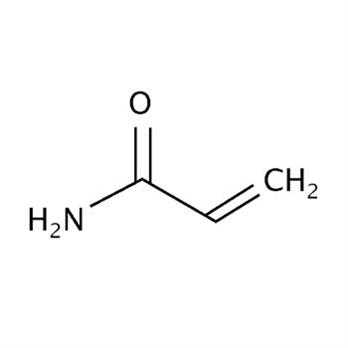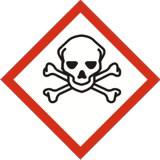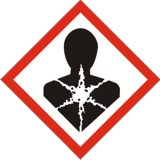Acrylamide, 1 kg, Each

|
|
Details:
Specifications It is incompatible with acids, bases, oxidizing agents, iron, and iron salts and decomposes non-thermally to form ammonia, and thermal decomposition produces carbon monoxide, carbon dioxide, and oxides of nitrogen. It is prepared on an industrial scale by the hydrolysis of acrylonitrile by nitrile hydratase. Most acrylamide is used to synthesize polyacrylamides, which find many uses as water-soluble thickeners. These include use in wastewater treatment, gel electrophoresis, papermaking, ore processing, and the manufacture of permanent press fabrics. Some acrylamide is used in the manufacture of dyes and the manufacture of other monomers.For use in gel electrophoresis of nucleic acid and protein protocolsUltra Pure GradeFree Acrylic acid<0.001%Conductivity (40%, H)<5umhosIron<0.0001%Lead<0.0001%Subject to additional hazardous materials handling chargeHazardous Materials DescriptionAcrylamideHazard Class or Division6.1Identification NumbersUN2074Packaging GroupIII*Applies additional hazardous materials handling chargeAppearanceWhite crystalsBoiling Point125°CDensity1.13 g/cm3HS Code29241900IUPAC_NameProp-2-EnamideMelting Point84-86°CPH ValuepH(10%, 1M NaCl): 5.5 - 6.5RTECS NumberAS3325000Pkg. Format/Yield25 kgMolecular Weight71.08 g/molMolecular FormulaC3H5NOCAS79-06-1Purity>99.9%HazardNeurotoxin, suspected carcinogen, toxicStorageRTSolubilityWater-216 g/100 mlBrand NamebioPLUSSize100 g
Additional Information
| SKU | 5135318 |
|---|---|
| UOM | Each |
| UNSPSC | 41116105 |
| Manufacturer Part Number | 40100020-3 |
| CAS Number | 79-06-1 |
| Is Hazardous | Yes |
| Product Weight | 1kg |
| HS Code | 2924190000 |
|---|---|
| UN Number | UN 3426 |
| Proper Shipping Name | Acrylamide |
| Packaging Group | PG III |
| Hazardous Class | 6.1 |
| Label |  |
| Molecular Formula | C3H5NO |
| EC Number | 201-173-7 |
| HIN | 33 |
| SIN | Electrophiles, Aminocarbonyl compounds |
| Hazard Statement | H301-H312+H332-H315-H317-H319-H340-H350-H361f-H372 |
| Precautionary Statements | P201-P261-P280-P304+P340+P312-P305+P351+P338-P308+P313-P301+P310-P260-P501a-P301+P310a-P202-P264-P270-P272-P273-P301+P310+P330-P302+P352+P312+P361+P364-P305+P351+P338+P337+P313-P307+P311-P405-P501 |
| Risk Statements | 45-46-20/21-25-36/38-43-48/23/24/25-62-48/20/21/22-22-24/25 |
| GHS | GHS06,GHS08 |
| GHS (Pictogram) |   |
| Safety Statements | 53-45-24-36/37/39-26-36/37 |
| Hazard Code | T |
| Signal Word | Danger |
